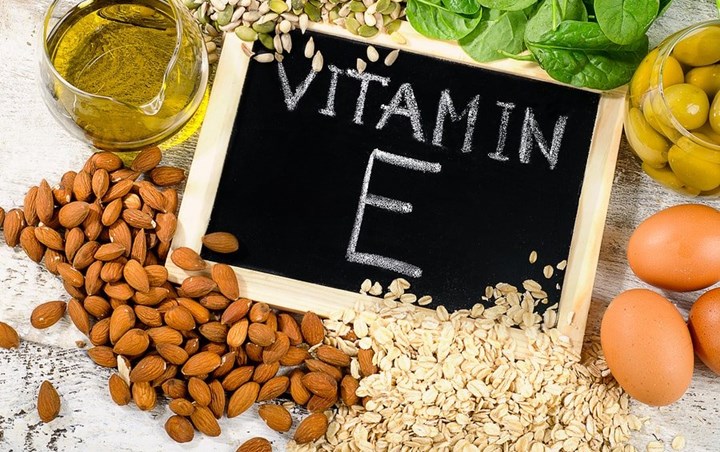Acne vulgaris (AV) is a disease of the pilosebaceous unit mainly found in adolescents. Most cases of AV are accompanied by a pleomorphic variation of the lesion, which consists of blackheads, papules, pustules, and nodules. This study was conducted in adolescent patients because AV at puberty is more common. Acne vulgaris (AV) affects 80% of people at various ages between 11-30 years AV prevalence in adolescents aged 10-19 years (according to WHO) ranges from 35-90%. AV occurs in the age range from infants to adults with a peak age of 16-19 years in adolescent men or 14 -17 years in teenagers.
AV at puberty occurs because androgen hormones that cause an increase in the size of the sebaceous glands, which will stimulate sebum production, causing blockage of sebum in hair follicles, which will trigger the formation of blackheads and provide a medium for the growth of Propionibacterium acnes. AV is a common dermatological condition characterized by excess production of sebum caused by hormones, follicular hyperkeratinization, and chronic inflammation in the pilosebaceous unit.
Research on the etiopathogenesis of acne vulgaris that currently being developed on the role of free radicals and antioxidants. Meanwhile, the skin that regularly exposed to oxidative damage induced by reactive oxygen species (ROS) produce both from endogenous sources (oxygen metabolism) and exogenous (radiation exposure, air pollution, oxygen intoxication, cigarettes, and alcohol) then ROS will trigger stress oxidative through the interaction of free radicals with cellular molecules such as lipids, carbohydrates, proteins and nucleic acids that cause inflammatory reactions.
The skin is equipped with antioxidant defense mechanisms to prevent the formation of ROS in the form of enzymatic antioxidants and non-enzymatic antioxidants.9 Among these antioxidants, α-tocopherol is the main form of vitamin E and is an essential fat-soluble antioxidant. α-tocopherol works to break the chain during the lipid peroxidation process to prevent oxidative stress.
In 2013, Ozuguz conducted studies of vitamin A and E levels in 94 patients with mild, moderate, and severe AV compared with 56 controls who did not have AV found that vitamin E levels were significantly decreased in patients with AV compared to control.
This study uses a cross-sectional observational analytic study design that aims to determine serum vitamin E levels in adolescent patients with AV and adolescents without AV. This study was conducted by consecutive sampling from November 2018 to January 2019 in teenage patients with AV and adolescents without AV who came in the URJ division of Skin and Sex Health Dr. Hospital. Soetomo Medical Cosmetics Division and meet the inclusion and exclusion criteria of the study sample. All research samples were taken anamnesis, physical examination, and examination of serum vitamin E levels in the Prodia Laboratory by using the HPLC (High-Performance Liquid Chromatography) method.
All data collected is recorded on a data collection sheet and then arranged in tables and graphs, then presented as a percentage. This research shows that most sexes are male – both in the AV group and the control group. In the AV group, there were 13 male subjects (76.5%), then in the control group, there were 11 male subjects (64.7%).
The total number of subjects was 34 subjects, with the median age in the AV group being 17 (15-19 years) and in the control group 19 (16-19 years). Based on the results of comparison graphs of serum vitamin E levels, the mean serum vitamin E levels were obtained in the AV group of 7.8 mg / L. In contrast, in the control group and serum vitamin E levels were collected at 10 mg / L. The Prodia Laboratory determines the average level is 3-14 mg / L. From this it appears that vitamin E levels in AV patients are still within normal limits, but found differences in the AV group with a control group. The analysis test used is the T-Test as a comparative test to assess the difference between a specific value with the average population group. In this study, the results showed serum vitamin E levels were significant differences with the control group.
Based on the results, 17 adolescent AV patients and 17 adolescents without AV who visited URJ Skin and Sex Health RSUD Dr. Soetomo Surabaya can be concluded that the mean serum vitamin E level in adolescents of the AV group was 7.8 mg / L, the mean serum vitamin E level at adolescent control group was 10 mg / L. Serum Vitamin E levels in the AV group were lower than in the control group. The results of this study are expected to be used as a basis for further research in determining the role of vitamin E relationships in AV pathogenesis.
Author: dr.Sawitri, Sp.KK (K) Link: https://e-journal.unair.ac.id/BIKK/article/view/12441/pdf
The Difference of Serum Vitamin E Levels between Adolescent Patients with and without Acne Vulgaris
Wahyunita Desi Ratnaningtyas, Sawitri, Dwi Murtiastutik, Afif Nurul Hidayati
Department of Dermatology and Venereology Faculty of Medicine Universitas Airlangga / Dr. Soetomo General Academic Teaching Hospital Surabaya





